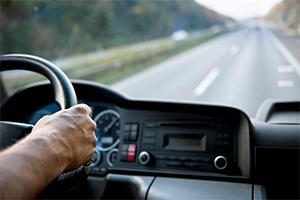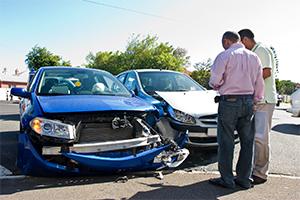Limousine driver qualification
The proper qualification and development of drivers is perhaps the most critical aspect of your limousine fleet safety program. Fleet performance will be directly affected by the quality of your program. High frequency of accidents, excessive supervision, poor employee morale, increased vehicle maintenance, reduced productivity and decreased profits may result from a poor employee selection program.
Job analysis
Limousine drivers are required to perform many varied functions. A written job analysis identifies the acceptable tasks, skills and knowledge required for a particular job. Obtain this information by observing people currently performing the job, interviewing experienced drivers and supervisors, and your knowledge of the duties of the job. Good applicants will be identified and also help develop a training program.
Application
A good application will screen and evaluate applicants. Applications specific to driving are available from many suppliers and should address: past employment, physical history, driving experience, accidents, traffic convictions, forfeiture of bond or collateral, present and past addresses, Social Security number and license information. Limousine drivers represent your company and directly interact with your customers.
Interview
Before interviewing, carefully review the application in order to verify or expand the supplied information. Prepare a list of questions to explore the applicant's qualifications and experience. Questions should lead to an opinion of the applicant's attitude and feelings about safe driving and customer relations. Review duties and responsibilities of the position as specified in Part 391 of the regulations.
Reference checks
Document responses to reference calls in the driver's file. Check on accident record, type of equipment operated, employment dates and job duties. The Federal Motor Carrier Safety Regulations (FMCSR) require an investigation of the driver's employment record.
Road test
A road test is essential in evaluating the applicant's ability to safely operate a vehicle. Written road test formats are available from suppliers. Test the driver's knowledge of the unique handling characteristics of a limousine. Check that the operator has a valid license for the type of equipment that will be driven. A respected individual within your organization who has an excellent safety record should witness and record the results. A road test of at least 15 miles should simulate traffic encounters that the driver will face in daily driving.
Motor vehicle record
A check of the applicant's driving record offers an opportunity to evaluate the driver's past safety record. This information can typically be obtained through the motor vehicle registry of your state. Pay close attention to license suspensions and revocations. Please see The Hanover guidelines for what constitutes an acceptable motor vehicle record here.
Physical exam
Physical exams may save lives by keeping drivers with serious conditions off the road. Exams should be performed by a doctor informed about duties of the job (including lifting requirements), rather than a personal physician. Physical exam criteria are outlined in the FMCSR.
Substance abuse testing
FMCSR specifies testing of commercial motor vehicle drivers in interstate commerce. A careful review of federal, state and local law should be completed before starting a substance abuse testing program.
Driver files
Written documentation of your driver qualification program should be maintained in each driver's file kept at your place of business. A periodic review will indicate if your program is working and help in accident investigations.
Federal Motor Carrier Safety Regulations
FMCSR should be consulted before starting or strengthening your program. Minimum criteria for drivers can serve as the basis for a sound program even if your fleet isn't subject to the regulations.
This material is provided for informational purposes only and does not provide any coverage or guarantee loss prevention. The examples in this material are provided as hypothetical and for illustration purposes only. The Hanover Insurance Company and its affiliates and subsidiaries (“The Hanover”) specifically disclaim any warranty or representation that acceptance of any recommendations contained herein will make any premises, or operation safe or in compliance with any law or regulation. By providing this information to you, The Hanover does not assume (and specifically disclaims) any duty, undertaking or responsibility to you. The decision to accept or implement any recommendation(s) or advice contained in this material must be made by you.
LC JAN 2019 12‐169
171-0683Limo (3/16)
Related resources
Limousine driver qualification
The proper qualification and development of drivers is perhaps the most critical aspect of your limousine fleet safety program. Fleet performance will be directly affected by the quality of your program. High frequency of accidents, excessive supervision, poor employee morale, increased vehicle maintenance, reduced productivity and decreased profits may result from a poor employee selection program.
Job analysis
Limousine drivers are required to perform many varied functions. A written job analysis identifies the acceptable tasks, skills and knowledge required for a particular job. Obtain this information by observing people currently performing the job, interviewing experienced drivers and supervisors, and your knowledge of the duties of the job. Good applicants will be identified and also help develop a training program.
Application
A good application will screen and evaluate applicants. Applications specific to driving are available from many suppliers and should address: past employment, physical history, driving experience, accidents, traffic convictions, forfeiture of bond or collateral, present and past addresses, Social Security number and license information. Limousine drivers represent your company and directly interact with your customers.
Interview
Before interviewing, carefully review the application in order to verify or expand the supplied information. Prepare a list of questions to explore the applicant's qualifications and experience. Questions should lead to an opinion of the applicant's attitude and feelings about safe driving and customer relations. Review duties and responsibilities of the position as specified in Part 391 of the regulations.
Reference checks
Document responses to reference calls in the driver's file. Check on accident record, type of equipment operated, employment dates and job duties. The Federal Motor Carrier Safety Regulations (FMCSR) require an investigation of the driver's employment record.
Road test
A road test is essential in evaluating the applicant's ability to safely operate a vehicle. Written road test formats are available from suppliers. Test the driver's knowledge of the unique handling characteristics of a limousine. Check that the operator has a valid license for the type of equipment that will be driven. A respected individual within your organization who has an excellent safety record should witness and record the results. A road test of at least 15 miles should simulate traffic encounters that the driver will face in daily driving.
Motor vehicle record
A check of the applicant's driving record offers an opportunity to evaluate the driver's past safety record. This information can typically be obtained through the motor vehicle registry of your state. Pay close attention to license suspensions and revocations. Please see The Hanover guidelines for what constitutes an acceptable motor vehicle record here.
Physical exam
Physical exams may save lives by keeping drivers with serious conditions off the road. Exams should be performed by a doctor informed about duties of the job (including lifting requirements), rather than a personal physician. Physical exam criteria are outlined in the FMCSR.
Substance abuse testing
FMCSR specifies testing of commercial motor vehicle drivers in interstate commerce. A careful review of federal, state and local law should be completed before starting a substance abuse testing program.
Driver files
Written documentation of your driver qualification program should be maintained in each driver's file kept at your place of business. A periodic review will indicate if your program is working and help in accident investigations.
Federal Motor Carrier Safety Regulations
FMCSR should be consulted before starting or strengthening your program. Minimum criteria for drivers can serve as the basis for a sound program even if your fleet isn't subject to the regulations.
This material is provided for informational purposes only and does not provide any coverage or guarantee loss prevention. The examples in this material are provided as hypothetical and for illustration purposes only. The Hanover Insurance Company and its affiliates and subsidiaries (“The Hanover”) specifically disclaim any warranty or representation that acceptance of any recommendations contained herein will make any premises, or operation safe or in compliance with any law or regulation. By providing this information to you, The Hanover does not assume (and specifically disclaims) any duty, undertaking or responsibility to you. The decision to accept or implement any recommendation(s) or advice contained in this material must be made by you.
LC JAN 2019 12‐169
171-0683Limo (3/16)
Related resources
Limousine driver qualification
The proper qualification and development of drivers is perhaps the most critical aspect of your limousine fleet safety program. Fleet performance will be directly affected by the quality of your program. High frequency of accidents, excessive supervision, poor employee morale, increased vehicle maintenance, reduced productivity and decreased profits may result from a poor employee selection program.
Job analysis
Limousine drivers are required to perform many varied functions. A written job analysis identifies the acceptable tasks, skills and knowledge required for a particular job. Obtain this information by observing people currently performing the job, interviewing experienced drivers and supervisors, and your knowledge of the duties of the job. Good applicants will be identified and also help develop a training program.
Application
A good application will screen and evaluate applicants. Applications specific to driving are available from many suppliers and should address: past employment, physical history, driving experience, accidents, traffic convictions, forfeiture of bond or collateral, present and past addresses, Social Security number and license information. Limousine drivers represent your company and directly interact with your customers.
Interview
Before interviewing, carefully review the application in order to verify or expand the supplied information. Prepare a list of questions to explore the applicant's qualifications and experience. Questions should lead to an opinion of the applicant's attitude and feelings about safe driving and customer relations. Review duties and responsibilities of the position as specified in Part 391 of the regulations.
Reference checks
Document responses to reference calls in the driver's file. Check on accident record, type of equipment operated, employment dates and job duties. The Federal Motor Carrier Safety Regulations (FMCSR) require an investigation of the driver's employment record.
Road test
A road test is essential in evaluating the applicant's ability to safely operate a vehicle. Written road test formats are available from suppliers. Test the driver's knowledge of the unique handling characteristics of a limousine. Check that the operator has a valid license for the type of equipment that will be driven. A respected individual within your organization who has an excellent safety record should witness and record the results. A road test of at least 15 miles should simulate traffic encounters that the driver will face in daily driving.
Motor vehicle record
A check of the applicant's driving record offers an opportunity to evaluate the driver's past safety record. This information can typically be obtained through the motor vehicle registry of your state. Pay close attention to license suspensions and revocations. Please see The Hanover guidelines for what constitutes an acceptable motor vehicle record here.
Physical exam
Physical exams may save lives by keeping drivers with serious conditions off the road. Exams should be performed by a doctor informed about duties of the job (including lifting requirements), rather than a personal physician. Physical exam criteria are outlined in the FMCSR.
Substance abuse testing
FMCSR specifies testing of commercial motor vehicle drivers in interstate commerce. A careful review of federal, state and local law should be completed before starting a substance abuse testing program.
Driver files
Written documentation of your driver qualification program should be maintained in each driver's file kept at your place of business. A periodic review will indicate if your program is working and help in accident investigations.
Federal Motor Carrier Safety Regulations
FMCSR should be consulted before starting or strengthening your program. Minimum criteria for drivers can serve as the basis for a sound program even if your fleet isn't subject to the regulations.
This material is provided for informational purposes only and does not provide any coverage or guarantee loss prevention. The examples in this material are provided as hypothetical and for illustration purposes only. The Hanover Insurance Company and its affiliates and subsidiaries (“The Hanover”) specifically disclaim any warranty or representation that acceptance of any recommendations contained herein will make any premises, or operation safe or in compliance with any law or regulation. By providing this information to you, The Hanover does not assume (and specifically disclaims) any duty, undertaking or responsibility to you. The decision to accept or implement any recommendation(s) or advice contained in this material must be made by you.
LC JAN 2019 12‐169
171-0683Limo (3/16)
Related resources
Limousine driver qualification
The proper qualification and development of drivers is perhaps the most critical aspect of your limousine fleet safety program. Fleet performance will be directly affected by the quality of your program. High frequency of accidents, excessive supervision, poor employee morale, increased vehicle maintenance, reduced productivity and decreased profits may result from a poor employee selection program.
Job analysis
Limousine drivers are required to perform many varied functions. A written job analysis identifies the acceptable tasks, skills and knowledge required for a particular job. Obtain this information by observing people currently performing the job, interviewing experienced drivers and supervisors, and your knowledge of the duties of the job. Good applicants will be identified and also help develop a training program.
Application
A good application will screen and evaluate applicants. Applications specific to driving are available from many suppliers and should address: past employment, physical history, driving experience, accidents, traffic convictions, forfeiture of bond or collateral, present and past addresses, Social Security number and license information. Limousine drivers represent your company and directly interact with your customers.
Interview
Before interviewing, carefully review the application in order to verify or expand the supplied information. Prepare a list of questions to explore the applicant's qualifications and experience. Questions should lead to an opinion of the applicant's attitude and feelings about safe driving and customer relations. Review duties and responsibilities of the position as specified in Part 391 of the regulations.
Reference checks
Document responses to reference calls in the driver's file. Check on accident record, type of equipment operated, employment dates and job duties. The Federal Motor Carrier Safety Regulations (FMCSR) require an investigation of the driver's employment record.
Road test
A road test is essential in evaluating the applicant's ability to safely operate a vehicle. Written road test formats are available from suppliers. Test the driver's knowledge of the unique handling characteristics of a limousine. Check that the operator has a valid license for the type of equipment that will be driven. A respected individual within your organization who has an excellent safety record should witness and record the results. A road test of at least 15 miles should simulate traffic encounters that the driver will face in daily driving.
Motor vehicle record
A check of the applicant's driving record offers an opportunity to evaluate the driver's past safety record. This information can typically be obtained through the motor vehicle registry of your state. Pay close attention to license suspensions and revocations. Please see The Hanover guidelines for what constitutes an acceptable motor vehicle record here.
Physical exam
Physical exams may save lives by keeping drivers with serious conditions off the road. Exams should be performed by a doctor informed about duties of the job (including lifting requirements), rather than a personal physician. Physical exam criteria are outlined in the FMCSR.
Substance abuse testing
FMCSR specifies testing of commercial motor vehicle drivers in interstate commerce. A careful review of federal, state and local law should be completed before starting a substance abuse testing program.
Driver files
Written documentation of your driver qualification program should be maintained in each driver's file kept at your place of business. A periodic review will indicate if your program is working and help in accident investigations.
Federal Motor Carrier Safety Regulations
FMCSR should be consulted before starting or strengthening your program. Minimum criteria for drivers can serve as the basis for a sound program even if your fleet isn't subject to the regulations.
This material is provided for informational purposes only and does not provide any coverage or guarantee loss prevention. The examples in this material are provided as hypothetical and for illustration purposes only. The Hanover Insurance Company and its affiliates and subsidiaries (“The Hanover”) specifically disclaim any warranty or representation that acceptance of any recommendations contained herein will make any premises, or operation safe or in compliance with any law or regulation. By providing this information to you, The Hanover does not assume (and specifically disclaims) any duty, undertaking or responsibility to you. The decision to accept or implement any recommendation(s) or advice contained in this material must be made by you.
LC JAN 2019 12‐169
171-0683Limo (3/16)





